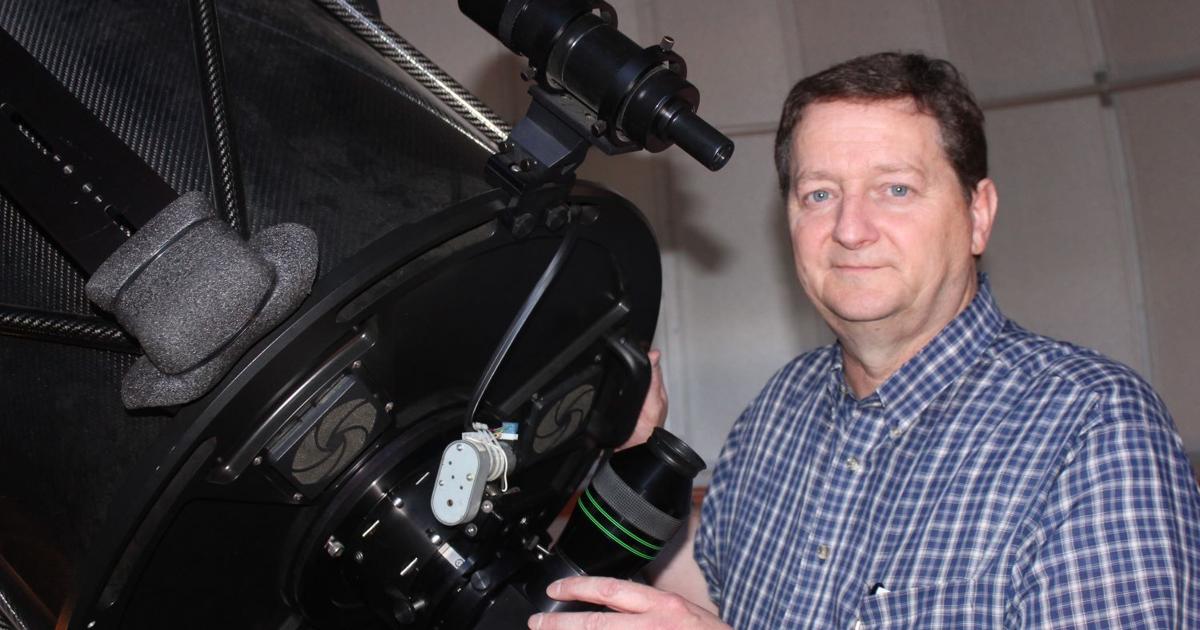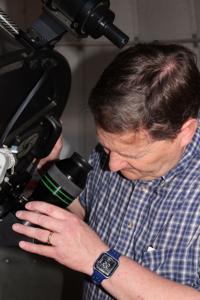LOGAN On April 8, people across North America people will gather outdoors at the same time with their safety glasses on to watch a solar eclipse.
A total solar eclipse happens when the moon passes between the Sun and Earth, completely blocking the face of the Sun. The sky will darken as if it were dawn or dusk.
Unfortunately, the people in Utah will not be able fully see the total celestial event. The eclipse will be most prominent in the eastern part of the country.
James Coburn, a teacher, and lab supervisor for the Utah State University Observatory said the eclipse is a big deal in some parts of the county, but it probably won’t be so much in Logan.

Bruce Coburn the observatory manager at Utah State University shows how to use the 20-inch telescope on April 3, 2024.
“We will get about 50 percent of the sun covered by the moon,” he said. “It won’t be near the eclipse we experienced in 2017.”
Coburn has been teaching classes using the observatory since 2000 so he is pretty good at understanding celestial data.
“The sun will cover the moon somewhere in the world every six months,” Coburn said. “If people want to look at it and still have their safety glasses from 2017 and they aren’t scratched or have holes in them they can still be used.”
When watching the partial phases of the solar eclipse directly the naked eye may damage them. Solar eclipse eye protection or viewing glasses should be used to look through not regular sunglasses to view the event.
Never look at the sun through a camera lens, telescope, binoculars, or any other optical device while wearing eclipse glasses or using a handheld solar viewer. Concentrated solar rays will burn through the filter and cause serious eye injury.
The 20-inch telescope at the university has different filters that can be used to watch the eclipse up close.
“A welding hood isn’t made for looking at the sun,” he said. “They don’t have a good enough filter to protect eyes. It isn’t as good as those cheap paper glasses they had for the earlier eclipes.”
He said the first contact or moment the edge of the moon touches the edge of the sun will happen at 11:28a.m. in the Beehive at state.
The maximum eclipse or the deepest point of the eclipse will happen at 12:34 p.m. The partial eclipse ends when the edge of the moon leaves the edge of the sun at 1:41 p.m.
Enthusiasts who want to experience the full 4 minutes and 28 seconds of total darkness will have to travel to Texas, Oklahoma, Arkansas, Missouri, Illinois, Kentucky, Indiana, Ohio, Pennsylvania, New York, Vermont, New Hampshire, and Maine. People in parts of Tennessee and Michigan can also get a look at the solar eclipse.
USU does not have a major in Astronomy, but they do teach classes and use the telescope for their labs.
“We are pretty low key, we have some classes in astronomy and the telescope is used for labs in the fall of the year,” Coburn said. “We also have a few nights the public can use the telescopes in the fall.”
An eclipse takes place every 18 months or so when the sky darkens as if it were dawn or dusk, but being able to witness the total eclipse is a far less common occurrence.
An eclipse is a rare event it can be seen from the same point on the planet only once every 375 years.


